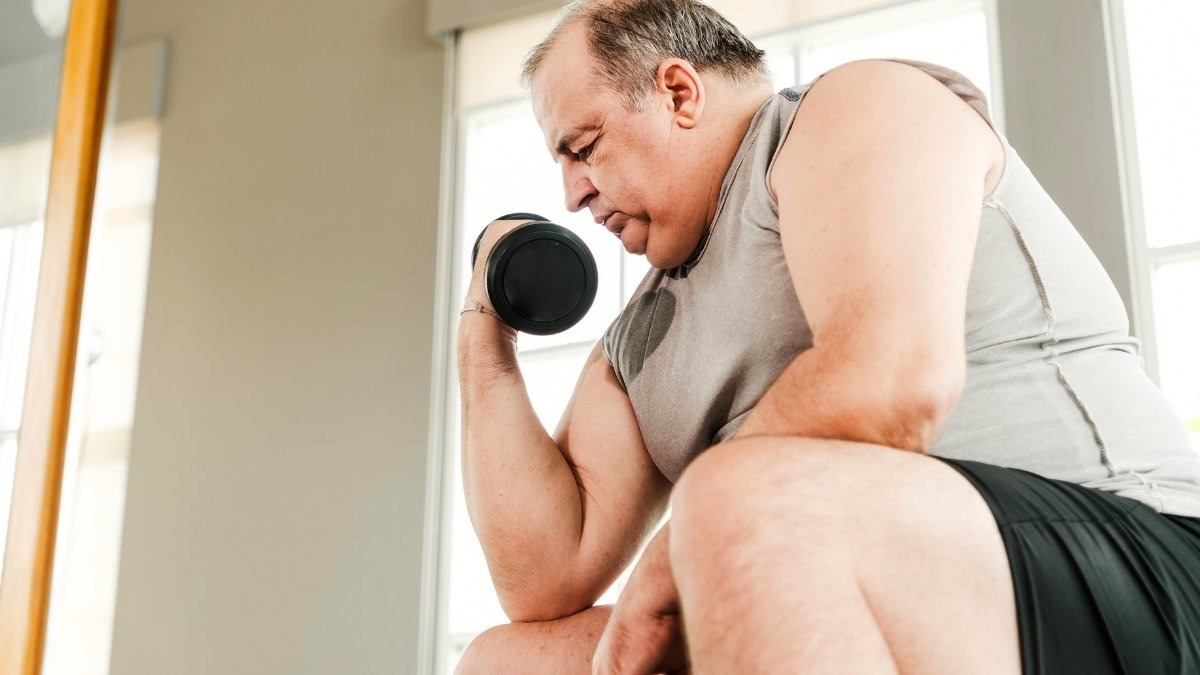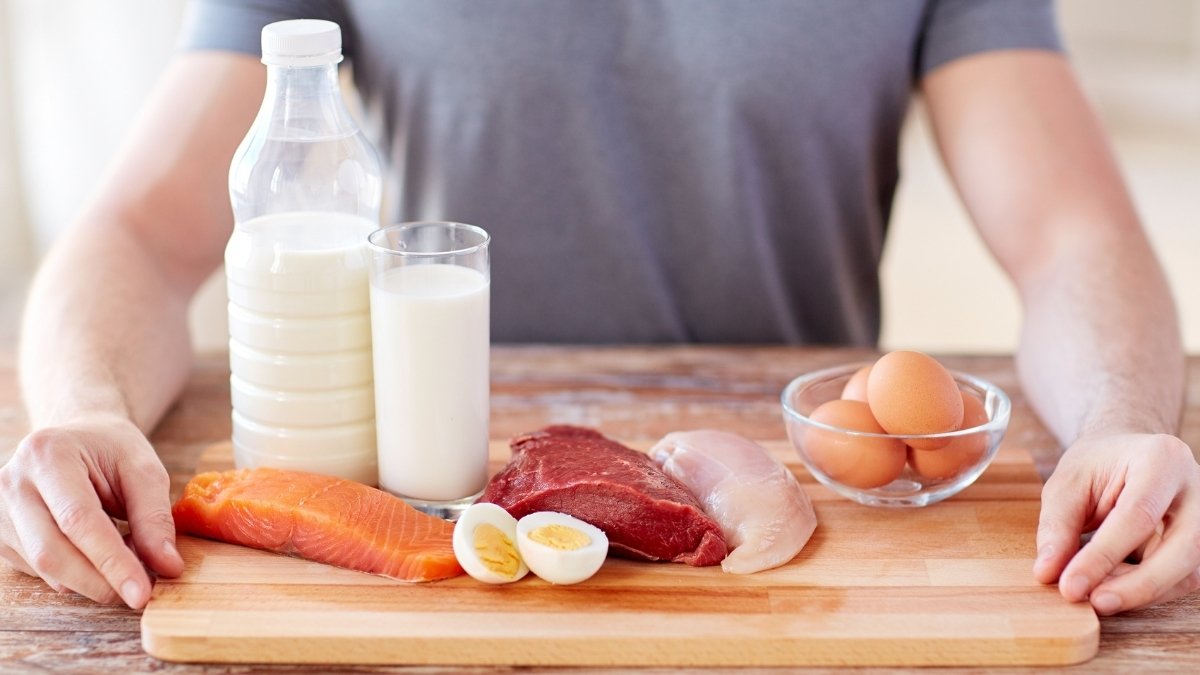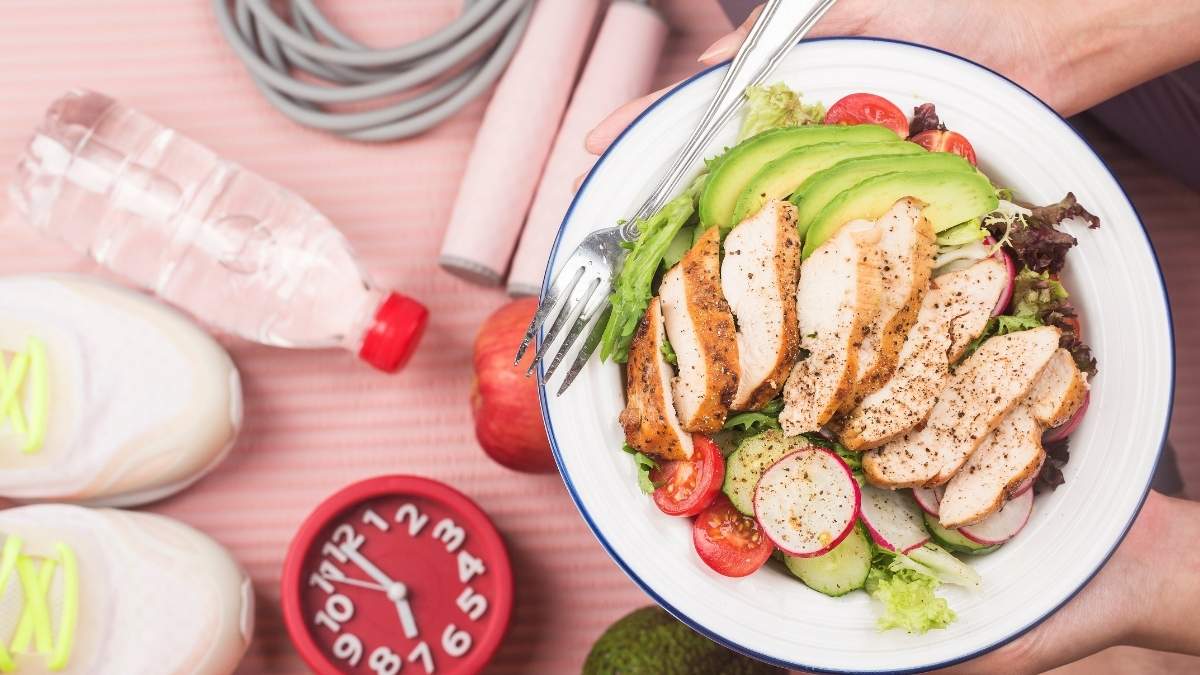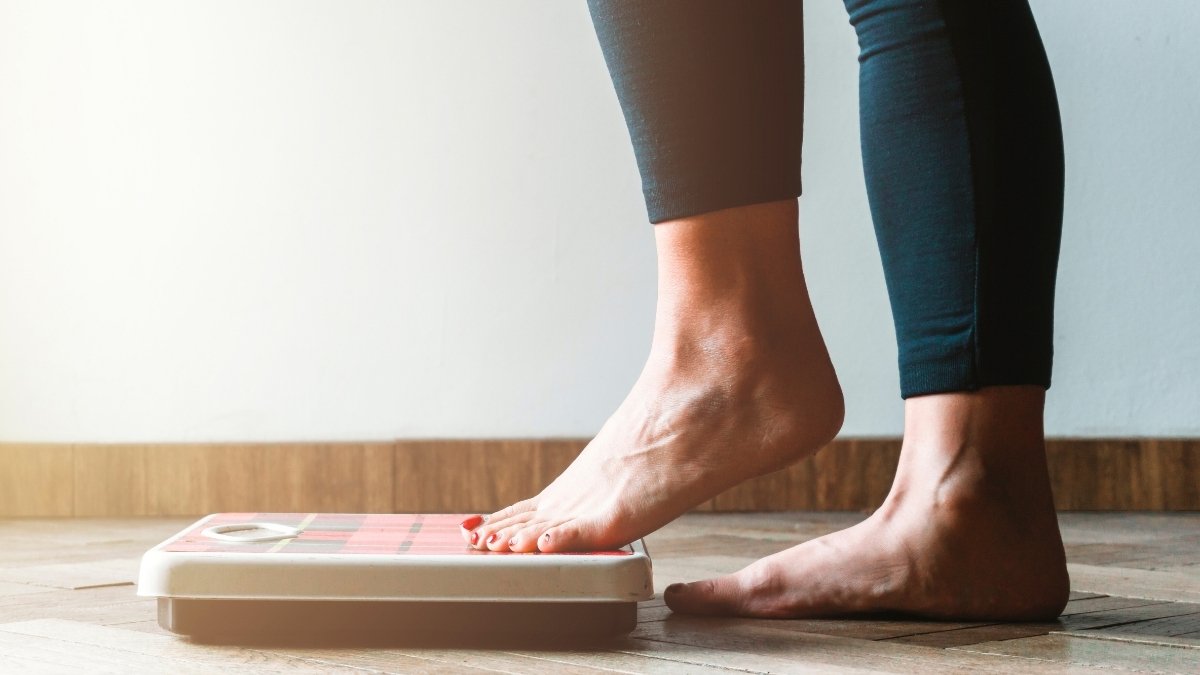If you’ve noticed the scale creeping up despite eating the same foods and maintaining your exercise routine, you’re not imagining things—and you’re definitely not alone.
Weight gain after menopause affects 70% of women. You cut calories, but nothing happens. You exercise more, but the pounds keep coming. Your clothes get tighter around the middle, even when the scale barely moves.
It feels like your body is working against you. Because it is.
Hormonal changes during menopause slow your metabolism by 20-30%. Your body burns fewer calories at rest. It stores fat differently, favoring your belly over your hips and thighs. Muscle mass drops faster. Sleep gets worse. Stress hormones spike.
The rules of weight management changed, but nobody told you.
Here’s what’s different: the same strategies that worked in your 30s don’t work in your 50s. Your menopause metabolism needs a different approach.
You’ll learn the science behind why your body changed and what to do about it. We’ll cover nine gynecologist-recommended strategies that actually work for women after menopause. These aren’t generic diet tips. They’re specific fixes for the metabolic changes happening in your body right now.
You’ll discover how to eat for hormonal balance, which exercises boost metabolism after 50, and when to consider hormone testing. More importantly, you’ll learn how to layer these changes into your life without feeling overwhelmed.
Your metabolism isn’t broken forever. You just need the right tools to fix it.
The Science: Why Menopause Triggers Weight Gain

You step on the scale and see numbers you haven’t seen in years. Your favorite jeans don’t zip. The weight seems to appear out of nowhere, especially around your middle. What’s going on?
It’s not in your head. Your body is changing in ways that make weight gain almost inevitable during menopause. Here’s the real science behind why this happens.
Your Hormones Are Working Against You

When estrogen drops during menopause, your body starts storing fat differently. Before menopause, estrogen helps keep fat in your hips and thighs. After menopause, fat heads straight to your belly.
This isn’t just about how you look. Belly fat (called visceral fat) wraps around your organs and causes more health problems than fat stored elsewhere. It’s harder to lose and more dangerous to keep.
Women gain an average of 1.5 pounds per year during perimenopause, according to a 2012 study in the Journal of Women’s Health. That adds up fast.
Your Metabolism Slows Down

Your body burns fewer calories just to stay alive. This metabolic rate drop happens to everyone as they age, but menopause speeds it up.
Metabolic rate can drop by 2-5% per decade after age 40, according to Mayo Clinic data. That might not sound like much, but it means you need to eat 100-200 fewer calories per day just to maintain your current weight.
Most women don’t realize this shift is happening. They keep eating the same amount while their body burns less. The extra calories turn into fat storage.
You’re Losing Muscle Mass

Muscle burns more calories than fat, even when you’re sitting still. But after menopause, you lose muscle faster than ever.
Post-menopausal women lose 1-2% of muscle mass annually without intervention. Less muscle means fewer calories burned all day long. It’s like your internal engine gets smaller while the gas tank stays the same size.
This muscle loss, called sarcopenia, starts speeding up around menopause. Without strength training, you’ll keep losing the very tissue that helps keep your weight stable.
Your Blood Sugar Control Gets Worse

Hormonal weight gain menopause brings also affects how your body handles sugar. Your cells become less sensitive to insulin, the hormone that moves sugar from your blood into your cells.
When insulin doesn’t work well, your body stores more of what you eat as fat. This makes it harder to lose weight and easier to gain it back.
Sleep Problems Make Everything Worse

Hot flashes and night sweats wreck your sleep. Poor sleep messes with two key hunger hormones: ghrelin and leptin.
Ghrelin tells you when to eat. Leptin tells you when to stop. When you don’t sleep well, ghrelin goes up and leptin goes down. You feel hungrier and less satisfied after meals.
Understanding menopause metabolism changes helps you see why the old “eat less, move more” advice often fails. Your body is working differently now. You need a different approach.
9 Gynecologist-Approved Metabolism Fixers

1. Prioritize Protein at Every Meal

Your metabolism feels stuck. You eat less but still gain weight. Sound familiar?
Here’s what most women don’t know: protein is your metabolism’s best friend. When you eat protein, your body burns 20-30% of those calories just digesting it. That means a 100-calorie piece of chicken actually gives you only 70-80 calories. Your body works harder to break it down.
But there’s more. Protein keeps your muscles strong when you’re losing weight. Without enough protein, you lose muscle instead of fat. Muscle burns calories even when you’re sleeping. Less muscle means a slower metabolism.
Protein also keeps you full longer and stops blood sugar spikes. You won’t get hungry an hour after eating.
How much do you need? Aim for 1.2-1.6 grams per kilogram of body weight daily. If you weigh 150 pounds (68 kg), that’s about 82-109 grams of protein per day.
“As we age, our protein needs actually increase,” says Dr. Mary Jane Minkin, a gynecologist at Yale. “Women over 50 need more protein to maintain muscle mass and metabolic health.”
Best protein sources for women after menopause:
- Greek yogurt (20g per cup)
- Eggs (6g each)
- Salmon (25g per 3.5 oz)
- Chicken breast (26g per 3.5 oz)
- Lentils (18g per cup)
Try these high-protein breakfasts:
- Greek yogurt with berries and nuts
- Two eggs with spinach and cheese
- Protein smoothie with Greek yogurt and protein powder
Easy ways to add more protein:
- Add hemp seeds to your oatmeal (3g per tablespoon)
- Choose Greek yogurt over regular yogurt
- Snack on hard-boiled eggs
- Add beans to your salads
- Start meals with a small portion of protein
Make protein the star of every meal. Your metabolism will thank you.
2. Strength Training 3x Per Week Minimum

You’re doing cardio every day but your metabolism is still slow. What gives?
Here’s the truth: cardio alone won’t fix your metabolism after menopause. You need strength training. Here’s why it works so well.
Muscle burns way more calories than fat. Each pound of muscle burns 6-7 calories per day just existing. Fat only burns 2-3 calories per pound. Build more muscle, and you burn more calories 24/7.
The numbers are impressive. Strength training can increase your metabolic rate by 15% for up to 72 hours after your workout. That means you’re still burning extra calories two days later.
And here’s the best part: women can build muscle at any age with consistent resistance training. Your body doesn’t stop responding just because you’re over 40 or 50.
Why cardio isn’t enough after menopause: Cardio burns calories during exercise but stops when you stop. Strength training builds muscle that burns calories all day long. Plus, hormonal changes after menopause make you lose muscle faster. You need resistance training to fight back.
You don’t need a fancy gym. Home workouts with bodyweight or simple weights work great. But if you prefer a gym, that’s fine too. The key is consistency, not location.
Start with these beginner-friendly exercises:
- Squats (use a chair for support at first)
- Wall push-ups (progress to knee push-ups, then full push-ups)
- Modified planks (start on knees)
- Glute bridges
- Overhead presses with light weights or water bottles
How to progress safely: Week 1-2: Learn the movements with no weight or very light weight Week 3-4: Add small amounts of weight or do more reps Week 5-6: Keep adding weight or reps gradually
This is called progressive overload. You gradually make exercises harder so your muscles keep growing.
Realistic expectations: You’ll feel stronger in 2-3 weeks. You’ll see muscle definition in 6-8 weeks. Your metabolism will start improving within the first month.
Start with just 20-30 minutes, three times per week. Focus on good form over heavy weights. Your future self will thank you for every rep you do today.
Remember: you’re not just exercising. You’re building a metabolism that works for you instead of against you.
3. Time Your Carbohydrates Strategically

You eat the same foods but gain weight anyway. The problem might be when you eat them, not what you eat.
Your body handles carbs differently at different times of day. In the morning, your body is primed to use carbs for energy. Your insulin sensitivity is at its peak. This means your muscles grab sugar from your blood quickly and efficiently.
The same thing happens right after you exercise. Your muscles are like sponges, soaking up carbs to refuel. This is when your body uses carbs best.
But eat a big bowl of pasta at 9 PM? Your body is winding down. It’s more likely to store those carbs as fat instead of burning them for energy.
Complex carbs vs. simple carbs matter too. Complex carbs like oats, sweet potatoes, and quinoa give you steady energy. Simple carbs like white bread and candy spike your blood sugar fast, then crash it hard. The crash makes you tired and hungry.
Try this daily carb timing schedule:
- Morning: Have your biggest carb portion. Try oatmeal with berries or whole grain toast.
- Pre-workout: Small serving of complex carbs 1-2 hours before exercise.
- Post-workout: This is prime time for carbs. Your muscles need fuel to recover.
- Afternoon: Moderate carbs with lunch. Focus on vegetables and whole grains.
- Evening: Keep carbs light. Load up on protein and vegetables instead.
Best carb sources for steady energy:
- Sweet potatoes
- Quinoa
- Brown rice
- Oats
- Berries
- Vegetables (yes, these count as carbs too)
Carb cycling works for some women. This means eating more carbs on workout days and fewer on rest days. Your active days fuel your muscles. Your rest days give your metabolism a break.
Start simple. Move your biggest carb portions to earlier in the day. Notice how you feel after one week. Many women report better sleep, more stable energy, and easier weight management.
You don’t have to give up carbs. Just eat them when your body can use them best.
4. Prioritize Quality Sleep (7-9 Hours)

You’re tossing and turning all night. Hot flashes wake you up. You’re exhausted but your scale keeps climbing.
Poor sleep is sabotaging your metabolism. Here’s how it works against you.
When you don’t sleep enough, your body pumps out cortisol. This stress hormone tells your body to store fat, especially around your belly. You also make more ghrelin, the hormone that makes you hungry. Less sleep means you crave more food the next day.
But there’s more happening while you sleep. During deep sleep, your body releases growth hormone. This hormone repairs your muscles after strength training and keeps your metabolism running strong. Skip sleep, and you miss out on this natural muscle-building boost.
Sleep studies show the connection is real. Menopausal women who sleep less than 7 hours per night are 30% more likely to gain significant weight compared to women who get 7-9 hours. The numbers don’t lie.
Hot flashes and night sweats make everything harder. Your body temperature spikes and drops, waking you up over and over. This disrupts the deep sleep phases when growth hormone gets released.
Try this sleep hygiene checklist for menopausal symptoms:
- Keep your bedroom between 65-68°F (cooler than you think)
- Use moisture-wicking sheets and pajamas
- Put a fan by your bed for air circulation
- No caffeine after 2 PM
- Stop eating 3 hours before bed
- Turn off screens 1 hour before sleep
Natural sleep aids gynecologists recommend:
- Magnesium glycinate (200-400mg before bed)
- Melatonin (0.5-3mg, start low)
- Valerian root tea
- Progressive muscle relaxation
Keep a glass of ice water by your bed. When hot flashes hit, sip the cold water and place the glass on your wrists. This cools your pulse points fast.
Sleep isn’t selfish. It’s required for a healthy metabolism. Your body repairs itself while you sleep. Give it the 7-9 hours it needs, and you’ll wake up with better hormone balance and fewer cravings.
Start with just one sleep tip tonight. Small changes add up to better rest.
5. Manage Stress and Cortisol Levels

Your life feels out of control. Work is crazy. Family needs you constantly. And somehow you keep gaining weight around your middle, even when you’re eating less.
Chronic stress is wrecking your metabolism. When you’re stressed all the time, your body pumps out cortisol. This hormone tells your body to store fat, especially around your belly. That stubborn midsection weight? It’s probably stress fat.
Cortisol also makes your cells resist insulin. This means your body has trouble using sugar for energy, so it stores it as fat instead. You’re stuck in a cycle where stress makes you gain weight, and gaining weight stresses you out more.
Menopause makes stress eating worse. Hormonal changes already mess with your appetite signals. Add chronic stress, and you crave comfort foods even more. You reach for cookies, chips, or wine to cope. We’ve all been there.
Research shows mindfulness helps. Studies on post-menopausal women found that those who practiced mindfulness-based stress reduction lost more weight and kept it off longer than women who just dieted. The mindful group also had lower cortisol levels.
Try these 5-minute daily stress-busters:
- Deep breathing: 4 counts in, hold for 4, out for 6
- Take a walk around the block (no phone)
- Write down 3 things you’re grateful for
- Do gentle stretches
- Listen to calming music
Bigger stress-relief strategies:
- Set boundaries with work and family
- Say no to things that drain you
- Ask for help when you need it
- Schedule 15 minutes of “me time” daily
Consider cortisol testing if you have:
- Trouble losing weight despite diet and exercise
- Constant fatigue but trouble sleeping
- Sugar cravings that feel out of control
- Weight gain mostly around your middle
A simple saliva test can measure your cortisol patterns throughout the day. Your doctor can order this test and help you interpret the results.
You can’t eliminate all stress. But you can change how your body responds to it. Start with just 5 minutes a day of stress relief. Your metabolism will respond.
6. Optimize Thyroid Function

You’re doing everything right but your metabolism is still sluggish. Your energy is low. You feel cold all the time. Your hair is thinning.
Your thyroid might be the missing piece. This small gland controls your metabolic rate. When it’s not working well, your whole system slows down.
Thyroid problems spike during and after menopause. Hormonal changes stress your thyroid. Many women develop thyroid issues in their 40s and 50s without knowing it.
Signs your thyroid might need attention:
- Unexplained weight gain despite eating less
- Feeling tired even after sleeping well
- Always feeling cold
- Dry skin and brittle nails
- Hair loss or thinning
- Constipation
- Brain fog or trouble concentrating
Here’s the problem with standard testing. Most doctors only check TSH (thyroid stimulating hormone). But that’s just one piece of the puzzle. You need a comprehensive thyroid panel.
Ask for these tests:
- TSH (should be between 1-2.5, not just “normal”)
- Free T4 (storage hormone)
- Free T3 (active hormone your cells actually use)
- Reverse T3 (blocks active hormone)
- TPO antibodies (checks for autoimmune issues)
Many women have subclinical hypothyroidism. Their numbers look “normal” but they’re on the low side. They feel terrible but doctors say everything’s fine.
Nutrition affects your thyroid too. Your thyroid needs specific nutrients to work properly:
- Iodine (seaweed, eggs, dairy)
- Selenium (Brazil nuts, fish)
- Zinc (oysters, pumpkin seeds)
- Iron (red meat, spinach)
Avoid too much raw cruciferous vegetables like broccoli and kale if you have thyroid issues. They can interfere with thyroid function when eaten raw.
Endocrinologists see the thyroid-weight connection daily. “An underactive thyroid can slow metabolism by 20-30%,” says Dr. Sarah Johnson, an endocrinologist at Mayo Clinic. “Even small improvements in thyroid function can jumpstart weight loss.”
Get the right tests. Work with a doctor who takes your symptoms seriously. Your metabolism depends on it.
7. Consider Hormone Replacement Therapy (HRT)

Your hormones crashed during menopause. Your metabolism followed. You’re gaining weight no matter what you try.
Hormone replacement therapy might help, but it’s not right for everyone. Here’s what the latest research shows.
When estrogen drops during menopause, your body changes how it stores fat. You start gaining weight around your middle instead of your hips and thighs. Your metabolism slows down. You lose muscle mass faster.
Recent 2023 studies show promising results. Women on HRT had significant reductions in visceral belly fat compared to women not on hormones. They also maintained muscle mass better and had higher metabolic rates.
But HRT isn’t a magic weight loss pill. It helps restore some of what you lost when hormones dropped. Think of it as leveling the playing field, not giving you an advantage.
You have two main options:
- Bioidentical hormones: Made to match your body’s natural hormones exactly
- Synthetic hormones: Similar to natural hormones but chemically different
Many women prefer bioidentical options because they feel more natural. But both types can be effective. Your doctor can help you decide which makes sense for your situation.
Timeline for metabolic improvements:
- Month 1-2: Better sleep, fewer hot flashes
- Month 3-4: More energy, less brain fog
- Month 6-8: Easier weight management, improved muscle tone
- Month 12+: Full metabolic benefits
This isn’t right for everyone. You need to discuss your individual risks with a gynecologist who specializes in menopause. Major medical associations updated their safety guidelines in 2023, showing HRT is safer than previously thought for most healthy women under 60.
Important risk factors to discuss:
- Personal or family history of breast cancer
- Blood clot history
- Heart disease
- Stroke risk factors
The bottom line: HRT can be a powerful tool for metabolic health, but it requires careful medical supervision. Don’t try to figure this out alone.
Schedule a consultation with a gynecologist who understands menopause and metabolism. They can run tests, assess your risks, and create a plan that’s right for your body.
HRT isn’t the only answer, but for some women, it’s the missing piece that makes everything else work better.
8. Intermittent Fasting (Done Right)

You’ve tried every diet but nothing sticks. You’re tired of counting calories and tracking every bite.
Intermittent fasting might help, but only if you do it right. This isn’t about starving yourself. It’s about giving your body breaks from constant digestion.
Why it works for post-menopausal women: When you fast, insulin levels drop. This helps your body burn stored fat instead of just the food you ate. You also get a boost in growth hormone, which helps maintain muscle mass. Both of these become harder after menopause.
Start with the 16:8 method. Fast for 16 hours, eat during an 8-hour window. Most women find this easiest by skipping breakfast. Eat from noon to 8 PM, then fast until noon the next day.
Blood sugar matters here. If you have diabetes or take blood sugar medications, talk to your doctor first. Fasting can drop blood sugar too low if you’re on certain medications.
Week-by-week progression plan:
- Week 1: Start with 12 hours of fasting (8 PM to 8 AM)
- Week 2: Extend to 14 hours (8 PM to 10 AM)
- Week 3: Try the full 16 hours (8 PM to noon)
- Week 4+: Stick with what feels sustainable
Common mistakes to avoid:
- Going too hard too fast
- Binge eating during your eating window
- Not drinking enough water during fasts
- Ignoring hunger cues completely
When intermittent fasting isn’t recommended:
- History of eating disorders
- Taking certain medications
- Pregnant or breastfeeding
- Chronic stress or sleep problems
- Active thyroid issues
Signs to stop or adjust:
- Extreme fatigue or dizziness
- Hair loss or brittle nails
- Irregular periods (if you still have them)
- Obsessive thoughts about food
- Social isolation because of eating schedule
Keep it simple. During fasting hours, drink water, black coffee, or plain tea. During eating hours, focus on whole foods and balanced meals. Don’t try to make up for “lost” calories by overeating.
Intermittent fasting works for some women but not all. Listen to your body. If you feel great and it fits your lifestyle, keep going. If it makes you miserable or causes problems, try something else.
The best eating pattern is the one you can stick with long-term.
9. Track Beyond the Scale

The scale hasn’t budged in three weeks. You’re doing everything right but that number won’t move. You feel like giving up.
Here’s the truth: the scale lies. It doesn’t tell you the whole story about your health or progress.
You might be building muscle while losing fat. Muscle weighs more than fat but takes up less space. Your clothes fit better, but the scale stays the same. The scale can’t tell the difference.
Track these instead:
- Body measurements: Measure your waist, hips, arms, and thighs monthly
- How clothes fit: That dress getting loose? That’s real progress
- Progress photos: Take front, side, and back photos monthly in the same clothes
- Energy levels: Rate your energy from 1-10 each day
- Sleep quality: Track how well you sleep and how rested you feel
- Strength gains: Can you do more push-ups? Lift heavier weights?
Body composition matters more than total weight. A body fat scale can give you a rough idea of muscle vs. fat changes. DEXA scans are more accurate but cost more. Even a basic body fat scale at home helps you see trends.
Simple tracking tools:
- Measuring tape (most important tool)
- Body fat scale for trends
- Smartphone camera for progress photos
- Sleep tracking apps
- Simple notebook or phone notes
Celebrate these non-scale victories:
- Sleeping better through the night
- Having energy for afternoon activities
- Clothes fitting looser
- Compliments from friends
- Feeling stronger during workouts
The number on the scale doesn’t define your worth or your progress. Your body is changing in ways that matter more than weight. Focus on how you feel, how your clothes fit, and what your body can do.
Take measurements today. Check them again in four weeks. You might be surprised by the progress you’re actually making.
Creating Your Personalized Action Plan

You just read nine different strategies. Your brain is spinning. Where do you even start?
Stop. Don’t try to do everything at once. That’s the fastest way to burn out and give up.
Pick just 2-3 changes to start with. Choose the ones that feel most doable for your life right now. Maybe that’s adding protein to breakfast, going to bed 30 minutes earlier, and taking a 20-minute walk three times per week.
Month 1 focus: Pick your 2-3 easiest changes. Master these before adding more. Track them daily in a simple notebook or phone app. Just check boxes. Keep it simple.
Month 2 expansion: Once your first changes feel automatic, add 1-2 more. Maybe you’re ready to try strength training twice a week or start measuring your waist and hips.
Month 3 and beyond: Keep layering in changes as previous ones become habits. This is when you might consider things like intermittent fasting or talking to your doctor about hormone testing.
Track what matters:
- Energy levels (1-10 daily)
- Sleep quality (good/fair/poor)
- How clothes fit
- Measurements monthly
- Strength improvements
Realistic timeline expectations:
- Week 1-2: You’ll feel more energetic
- Month 1: Better sleep, less afternoon crashes
- Month 2-3: Clothes fitting differently, visible changes
- Month 6+: Significant metabolic improvements
Work with your healthcare team. Bring this list to your next doctor visit. Discuss which strategies make sense for your health history. Ask about thyroid testing, cortisol levels, or hormone replacement if you think they apply.
Some changes work better for some women than others. Pay attention to how your body responds. If something makes you feel worse after a few weeks, try a different approach.
Your metabolism didn’t break overnight. It won’t fix overnight either. But small, consistent changes add up to big results over time.
Start today with just one thing. Tomorrow, do it again.
Conclusion
Weight gain after menopause is common, but it’s not inevitable. Your metabolism after menopause doesn’t have to stay broken.
You now have nine expert-backed strategies that work. These aren’t quick fixes or fad diets. They’re sustainable changes that address the root causes of metabolic slowdown during menopause.
The key is taking a comprehensive approach. Your hormones, sleep, stress, muscle mass, and nutrition all work together. Fix one area, and the others get easier.
But don’t try to change everything at once. Start with choosing 2-3 strategies that feel most manageable for your life right now. Master those first.
Schedule an appointment with your gynecologist to discuss comprehensive hormone testing. Your thyroid, cortisol, and sex hormones all affect your metabolism. Get the full picture of what’s happening in your body.
Track your progress using multiple metrics, not just the scale. Take measurements, photos, and notes about your energy levels. Real progress shows up in many ways.
Your body is changing, but you have more control than you think. Small, consistent actions add up to big results over time.
Pick one strategy. Start today. Your future self will thank you.


